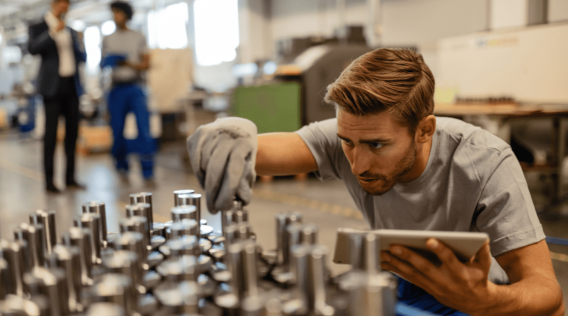Prototype development is an essential aspect of product design and development. Prototyping allows designers and developers to test their ideas and concepts before finalizing the product. The process of prototyping allows for the identification of design flaws, potential manufacturing issues, and overall product functionality. In this article, we will explore the importance of prototyping in product development.
What is Prototyping?
A prototype is a preliminary model of a product that is used to test and evaluate its various aspects. The prototype may be made of different materials, ranging from paper to wood, plastic, or metal. Prototypes can be developed in different stages, such as the concept, design, or manufacturing stage. In essence, a prototype is a representation of the product that can be used for testing, feedback, and improvement.
Why is Prototyping Important?
Here are some reasons why prototyping is essential in product development:
1. Testing and Evaluation: Prototyping enables designers and developers to test and evaluate their designs before the final product is produced. This allows for the identification of design flaws, manufacturing issues, and potential improvements that can be made to the product.
2. Cost Reduction: Prototyping can help to reduce the overall cost of product development. This is because identifying design flaws and manufacturing issues early on can prevent costly mistakes later in the process.
3. User Feedback: Prototyping allows for user feedback, which can provide valuable insights into the product\’s functionality and usability. This feedback can be used to improve the product and create a better user experience.
4. Improved Design: Prototyping allows designers to experiment with different design concepts and ideas. This can lead to more innovative and creative designs that may not have been possible without prototyping.
5. Market Testing: Prototyping can be used to test the product in the market before the final product is produced. This can provide valuable insights into the product\’s potential demand, competition, and overall marketability.

Types of Prototyping
There are different types of prototyping that can be used in product development. Some of these include:
1. Paper Prototyping: This involves creating a basic model of the product using paper or cardboard. It is a quick and inexpensive way to test and evaluate design concepts and ideas.
2. Functional Prototyping: This involves creating a working model of the product that simulates its functionality. It can be used to test and evaluate the product\’s functionality and performance.
3. Digital Prototyping: This involves using computer software to create a digital model of the product. It can be used to test and evaluate the product\’s design and functionality.
4. Rapid Prototyping: This involves using 3D printing technology to create a physical model of the product. It can be used to test and evaluate the product\’s design and functionality.
Conclusion
In conclusion, prototyping is an essential aspect of product design and development. It allows for the testing and evaluation of design concepts and ideas, reduces the overall cost of product development, and provides valuable insights into the product\’s functionality and usability. By using different types of prototyping, designers and developers can create more innovative and creative designs and improve the overall user experience of the product.
-

- Sérsniðin verksmiðja Kína Bmx Cycles Road Sport Kids Reiðhjól 12 16 18 20 tommur Cycle Mtb fyrir krakka 6-10 ára
-

- Vinsælt íþróttahjól fyrir börn Hágæða jafnvægishjól fyrir börn Barnahjól
-

- Magnesium alloy die-casting Auto parts Side step Running board
-

- OEM háþrýstisteypu úr magnesíum ál ramma fyrir reiðhjól
-

- Reiðhjól Freehub 12/14/16 tommu barnahjól Low Rider hjól Magnesíum ál barnahjól 3-8 ára Á lager
-

- Magnesíum álfelgur deyja-steypu Bílavarahlutir RDM húsnæði

 0086-750-5616188
0086-750-5616188 +86 13392089688
+86 13392089688 sales@zhongmei-tech.com
sales@zhongmei-tech.com







